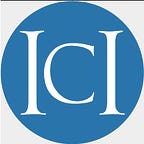Happy LGBTQ+ Pride Month!
As we celebrate Lesbian, Gay, Bisexual, Transgender, Queer + (LGBTQ+) Pride Month in June 2022, we must acknowledge disabled LGBTQ+ advocates who have fought and are still fighting for justice at the intersections of disability and LGBTQ+ identities.
LGBTQ+ advocates throughout history
Disability is often erased from historical accounts when we learn of activists who fought for collective struggles. For example, did you know that Michelangelo, Leonardo da Vinci, Frida Kahlo, Marcel Proust, Virginia Woolf, James Baldwin, Audre Lorde, and Adrienne Rich are all prominent LGBTQ+ artists, authors, and advocates who also had disabilities?
Marsha P. Johnson, gay liberation activist and leader at the Stonewall uprising, also identified as a person with physical and mental health disabilities. Johnson co-founded STAR, a trans rights organization in New York, with trans rights activist Sylvia Rivera. STAR focused on the rights of trans women, young drag queens, gay youth, and people with disabilities.
Local to Boston, Connie Panzarino was a disabled lesbian writer, author, and activist who was the director of the Boston Self Help Center. She served on boards for the Disability Law Center, the Project on Women and Disability, and the Boston Center for Independent Living. Connie played a critical role in passing of Section 504 of the Rehabilitation Act of 1973. In her memoir, The Me in the Mirror, Connie writes about her experience as a disabled, lesbian activist.
Read more: The Intersection Of LGBTQ History And Disability, by Victoria A. Brownworth, Philadelphia Gay News
Intersecting Identities & Challenges
People with disabilities are more likely to identify as lesbian, gay, bisexual, or transgender than people without disabilities. Thirty-six percent of lesbian and bisexual women and 40% of bisexual men and transgender people identify as disabled, compared to 27% of heterosexual people.
People with disabilities are underemployed compared to people without disabilities. Queer people with disabilities, particularly queer people of color with disability, often face additional employment discrimination based on disability, race, and gender identity or sexual orientation.
People of color with disabilities who are part of the LBGTQ+ community are also more likely to be incarcerated, and this impacts LGBTQ+ youth of color particularly. About 85% of incarcerated LGBTQ+ youth are youth of color. LGBTQ+ individuals are also more likely to have mental health related disabilities, which is also linked to discrimination, poverty, and violence.
We must improve accessibility to queer spaces and organizations, expand family leave policies, reduce policing, and center the experiences of queer, Black, Indigenous and people of color with disabilities in our research.
Read more: LGBT People with Disabilities by the Movement Advancement Project, Center for American Progress, National Center for Lesbian Rights, and National LGBTQ Task Force.
Disability Justice: Strengths
Queer, disabled Black, Indigenous and people of color are leading the Disability Justice movement.
Disability Justice organizer and writer Mia Mingus defined Disability Justice as “a multi-issue political understanding of disability and ableism, moving away from a rights-based equality model and beyond just access, to a framework that centers justice and wholeness for all disabled people and communities.”
Leah Lakshmi Piepzna-Samarasinha, disabled organizer, performance artist, and educator, expands this definition further: Disability justice is “a way of envisioning the ways people can organize around and think about disability that centers the lives and leadership of disabled Black, Indigenous and people of color and/or queer, trans, Two Spirit and gender nonconforming people.” Leah, in collaboration with the late Stacey Park Milbern, wrote Disability Justice: An Audit Tool, which was designed for BIPOC-led organizations to assess their disability justice work.
Also in the audit tool, Leah and Stacey help distinguish between the Disability Rights movement that rose to prominence in the 1960s, and the Disability Justice movement. The Disability Rights Movement:
• “Historically focused on a legal/civil rights framework, using laws and policy changes to get rights for disabled people”
• Has had issues with “centering white male leadership, racism, and using a single-issue approach instead of working with other movements”
• “Many disabled BIPOC have faced racism in the disability rights movement or have felt like our experiences of disability were not centered”, which prompted the need for a more intersectional analysis.
This June, take some time to learn more about Disability Justice and the unique strengths of those advocating at the intersection of disability and LGBTQ+ identity.
Read more:
· Disability Justice: An Audit Tool, by Leah Lakshmi Piepzna-Samarasinha, envisioned with Stacey Park Milbern
· Sins Invalid, What is Disability Justice?
· Sins Invalid, The 10 Principles of Disability Justice
